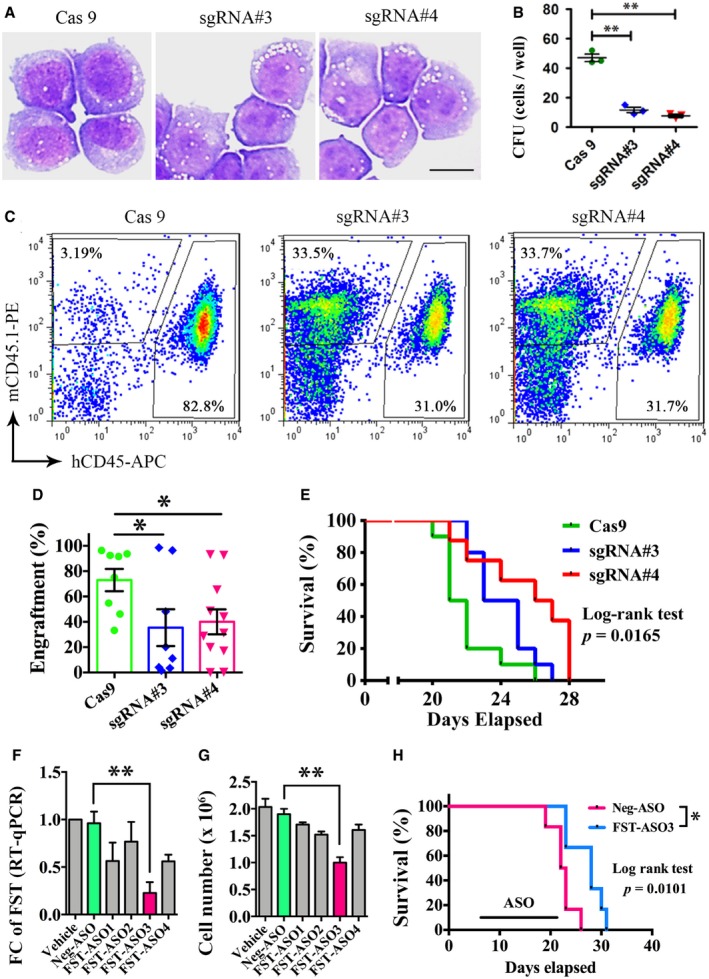Figure 6
The morphology and clonogenicity of MOLM‐13 after The engraftment of MOLM‐13 after The effect of The knockdown efficiency of different MOLM‐13 cell growth was measured after 3 days of treatment of Intraperitoneal injection of
Data information: In (B, D, F, and G), data were presented as mean ± SEM. *

